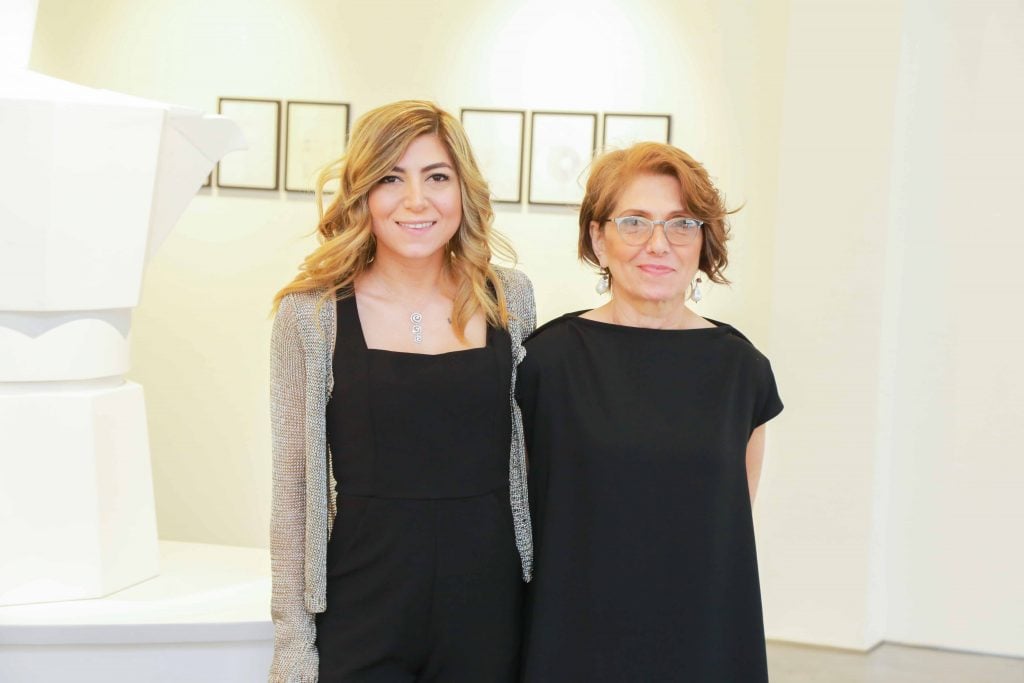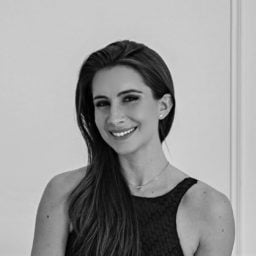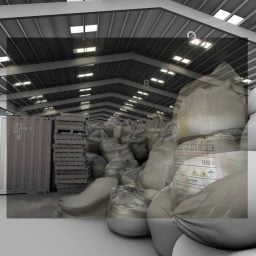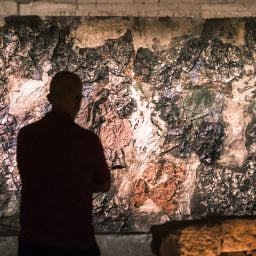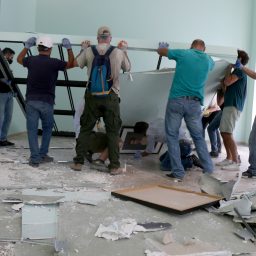At 3:31 p.m. on August 4, 2020, less than three hours before the Beirut explosions took the life of 29-year-old cultural producer Gaïa Fodoulian, she posted a picture of herself on Facebook wearing a red dress running through the woods. In the caption, she wrote, “Everyone is the creator of one’s own faith.”
It was rare for Fodoulian to turn the camera on herself, according to her mother, Annie Vartivarian. “She was more apt to post pictures of art, design, and nature, but for some reason on that day, a few hours before she died, she posted this picture as if she knew what was going to happen,” Vartivarian told Artnet News from Beirut. “Gaïa was always very intuitive.”
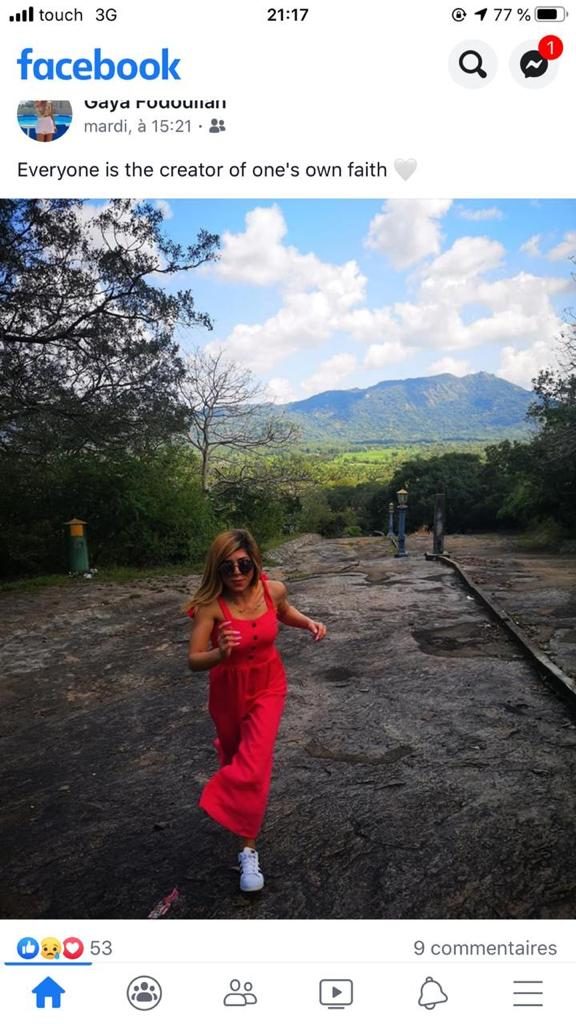
A screen shot of Gaïa Fodoulian’s final Facebook post. Photo: courtesy of Annie Vartivarian.
On that Tuesday, the mother and daughter had spent the day together, having just returned home when the first explosion hit. “We stood next to each other watching the smoke from the window,” Vartivarian recalled. As the second explosion erupted seconds later, they ran in opposite directions seeking cover. When Vartivarian returned from the kitchen, she found her daughter lying on the floor. They rushed to the hospital, but couldn’t find any help in the midst of all the carnage and chaos. Fodoulian passed away from internal bleeding.
Eight months after her death, against the backdrop of a city still struggling to emerge from the rubble, Vartivarian plans to carry on her daughter’s legacy with AD Leb, which stands for Art Design Lebanon, a new online platform that Fodoulian was developing when she died. It will function as a virtual art gallery, showcasing works predominantly by artists from Lebanon as well as the wider Middle East and around the world.
Vartivarian, a short woman of immense presence and determination, finished the project while wrestling with her own grief and the aftershock of losing not just Fodoulian but her city. Vartivarian also runs Laetitia Gallery in Beirut, which showcases works by emerging and established Lebanese and international artists.
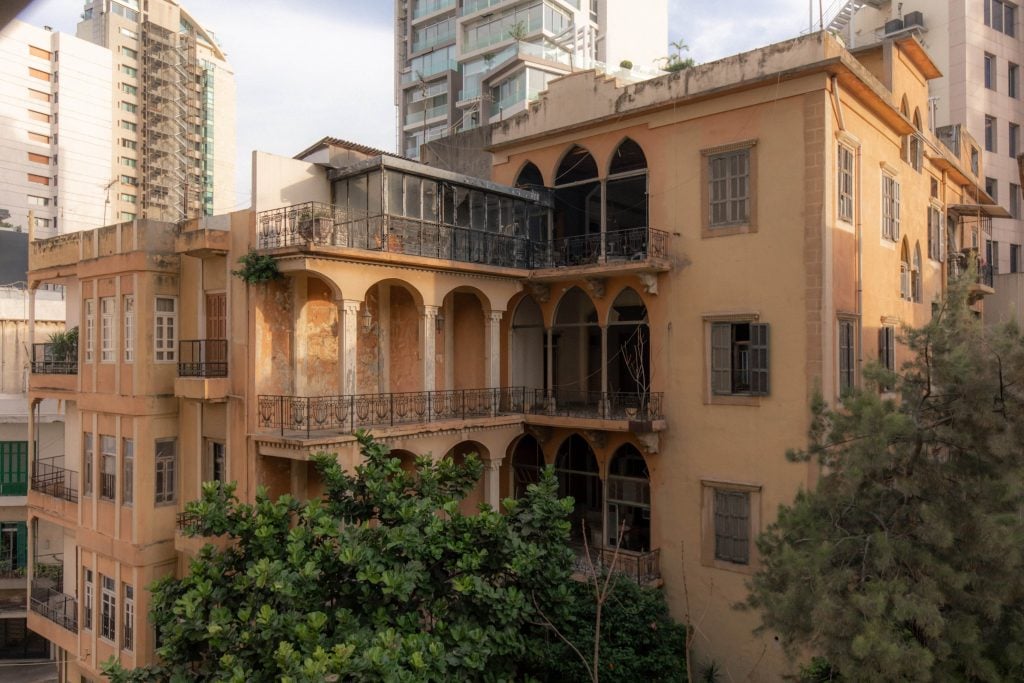
The outside of the Tabbal Building, Courtesy of AD Leb, 2021. Photo: Vartan Seraydarian.
The new platform, which launches April 3, will kick off with an IRL show titled “Everyone is the creator of one’s own faith,” after the last words written by Fodoulian on her Instagram. It represents the first large-scale group exhibition held in Beirut since the explosions.
The exhibition will occupy the empty spaces of the historic Tabbal building on Sursock Street, which dates to the 1890s, in downtown Beirut. The participating artists are mostly from Lebanon with a few from the greater Middle East, including Samer Bou Rjeily, Karen Chekerdjian, Hatem Imam, and Caroline Tabet. A 3-D video of the exhibition will also be accessible on the digital platform.
The launch of the gallery is one of few signs of life in a Lebanese art scene. The country remains at a political impasse as squabbling between Prime Minister designate Saad Hariri and President Michel Aoun continues over the formation of a new government. Every day, the Lebanese watch as their currency collapses further and further. Inflation has skyrocketed as the US dollar exceeded the 15,000 Lebanese lira threshold. Fights have broken out at supermarkets for food and essential items.

Sirine Fattouh, Arab Artist (2019). Courtesy of AD Leb.
In the past several months, thousands of Lebanese have left their country, many moving to nearby Dubai or France. As for the creative industry, a majority of artists are relocating their studios and staging exhibitions abroad. Vartivarian’s soon-to-open exhibition will be staged amidst this rising sea of chaos.
“Gaïa would have wanted to help keep the creative scene of her country alive,” Vartivarian said. “We continue to live in great hardship in Lebanon. The situation has gotten worse, but people still express themselves through art. They try and channel their fears, their trauma, and their hopes through creative means.”
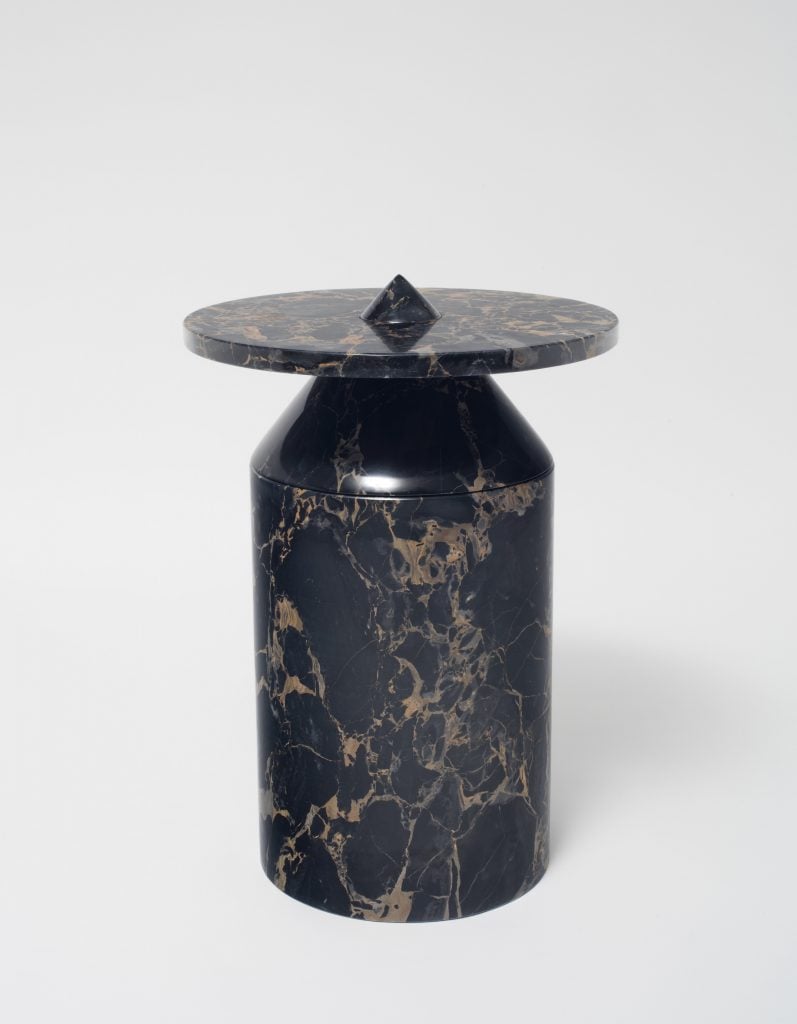
Karen Chekerdjian, Totem in Marble (2019). Courtesy of AD Leb.
The empty spaces of the old Tabbal building are a befitting setting for the show, especially in this moment of struggle. The Mediterranean light that trickles through the arched windows illuminates the historical building and offers a reminder of Lebanon’s rich historical past.
“Art is important at all times—during times of war and crisis,” said artist Sirine Fattouh, who is presenting three works in the show. “Even during the times we are living in Lebanon now, we cannot live without art. It is our oxygen.”
“Everyone is the creator of one’s own faith” runs from April 3–24 at the Tabbal Building on Sursock Street in Beirut, Lebanon.
